Tibetan Mastiff vs Bullmastiff: Comparing Dog Breeds
Two dog breeds that are rising in popularity nowadays are the Tibetan Mastiff and the Bullmastiff. Both are awesome and dependable guard dogs with several quirky personality traits that are entertaining to watch. If you have a deep liking for the Mastiff dog breeds, these two are worth considering.
But which one should you choose? This article will help you in seeing which of them might suit you better.
Table of Contents
Breed Origins
Tibetan Mastiff
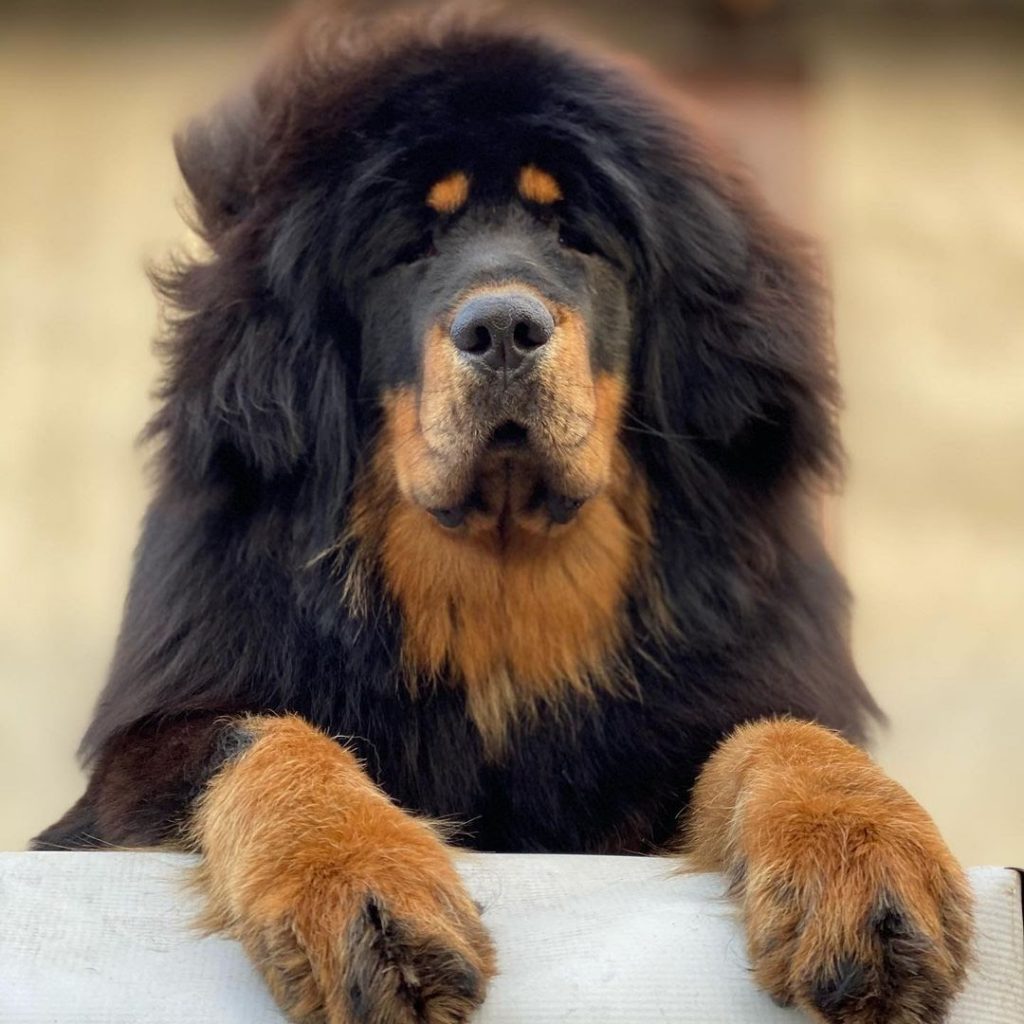

The name already suggests that the Tibetan Mastiff comes from Tibet. He was also already present in other places like Mongolia, Bhutan, Pakistan, and India where he was primarily used as a herding or guarding dog. Since his protective instinct is innate, this Mastiff breed is capable of safeguarding the cattle from wild beasts that lurk nearby.
Although it is fascinating to learn more about the roots of his history, the Tibetan Mastiff doesn’t have many documents that would tell us about him before the 1800s. However, significant events took place such as him being gifted to Queen Victoria by the Viceroy of India in the year 1847 and another pair of Tibetan Mastiffs to President Eisenhower in the late 1950s.
Later on, the fame of this breed gradually soared, but the breeding was put to a halt when World War II took place. It was until 1976 when English breeders began importing dogs of this kind again.
Bullmastiff
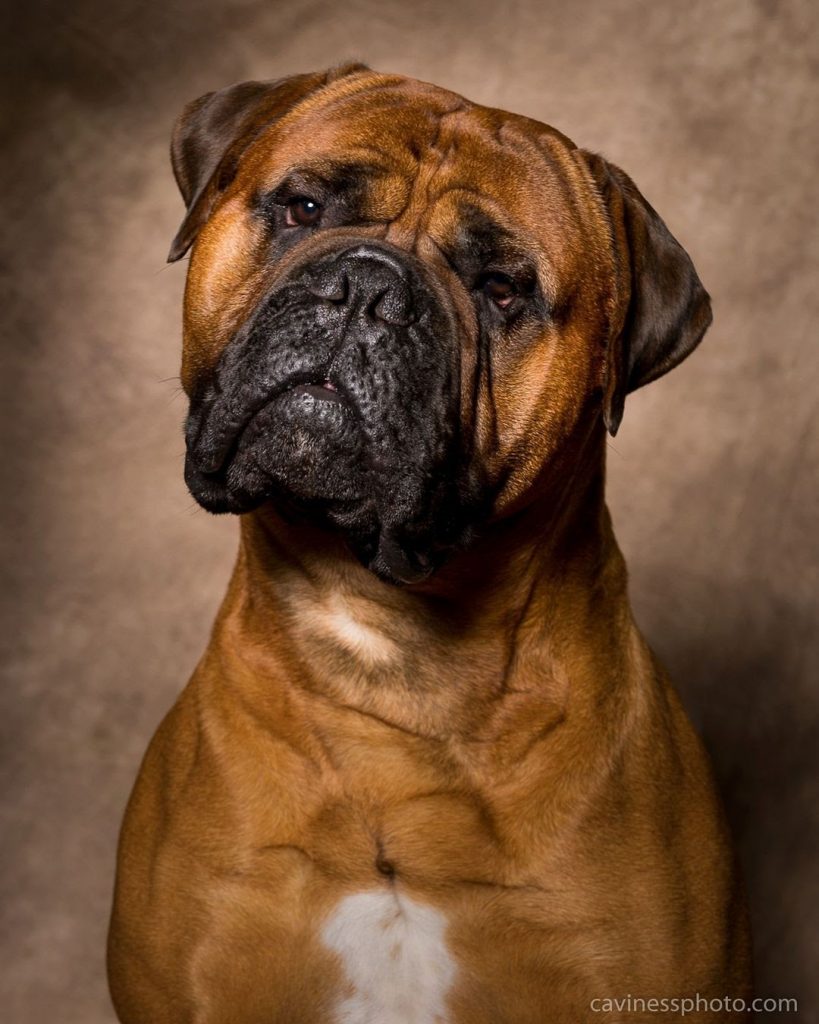

The Bullmastiff is a breed that comes from England. This one is new and was just developed around 1860. The main reason why he came to exist is to accompany the English gamekeepers in their duty to keep trespassers and poachers off the private properties of wealthy landowners.
Catching poachers was not an easy nor a safe thing to do back then. After all, poaching was considered a serious offense and someone who’s caught doing it shall be hanged. So, instead of facing the gallows, criminals would rather kill gamekeepers.
However, the intensity of this threat was reduced the moment the Bullmastiff emerged. He is 60% Mastiff and 40% Bulldog. He is just right in size and powerful enough to hold down poachers without finishing them off. Eventually, he also became an estate guard and developed a new coat color which is fawn, and a black mask similar to his Mastiff parent.
Size, Appearance, & Coloring
Tibetan Mastiff
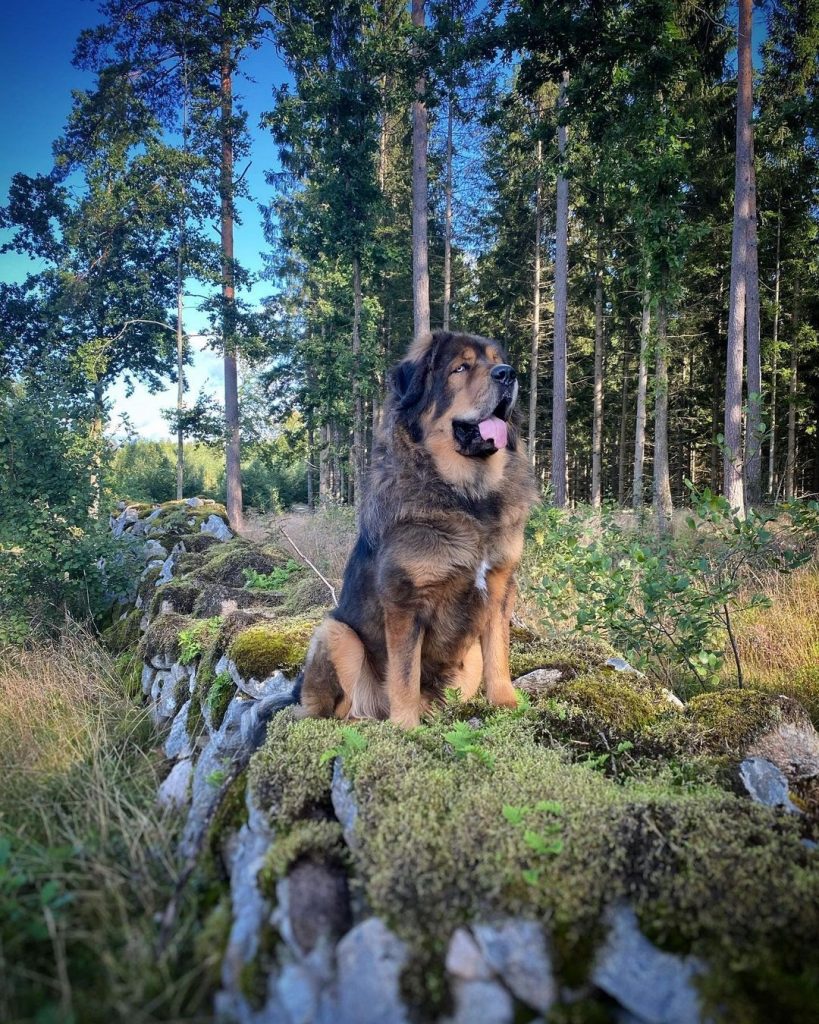

The Tibetan Mastiff is a large dog which is something to expect from a Mastiff breed. He has several identifying features that would help anyone spot him easily from a crowd of dogs. His physical features include a large, broad head, a fluffy, dense mane, a set of deep-seated brown eyes, a defined and square muzzle, cat-like paws, a well-proportioned build, and a curled feathery tail.
He has a gentle expression on his face but he sure is strong and not to be underestimated. Kennel clubs consider him a large dog due to his measurements which are listed below:
- Male: A minimum of 26 inches in height; 90-150 pounds heavy
- Female: A minimum of 24 inches tall; 70-120 pounds heavy
In addition, he is double-coated and the type makes him capable of thriving in the cold. There are several coat colors for this breed which includes:
- Black
- Cream
- Brown
- Black & tan
- Brown & tan
- Red gold
- Cream sable
- Blue-gray & tan
Bullmastiff
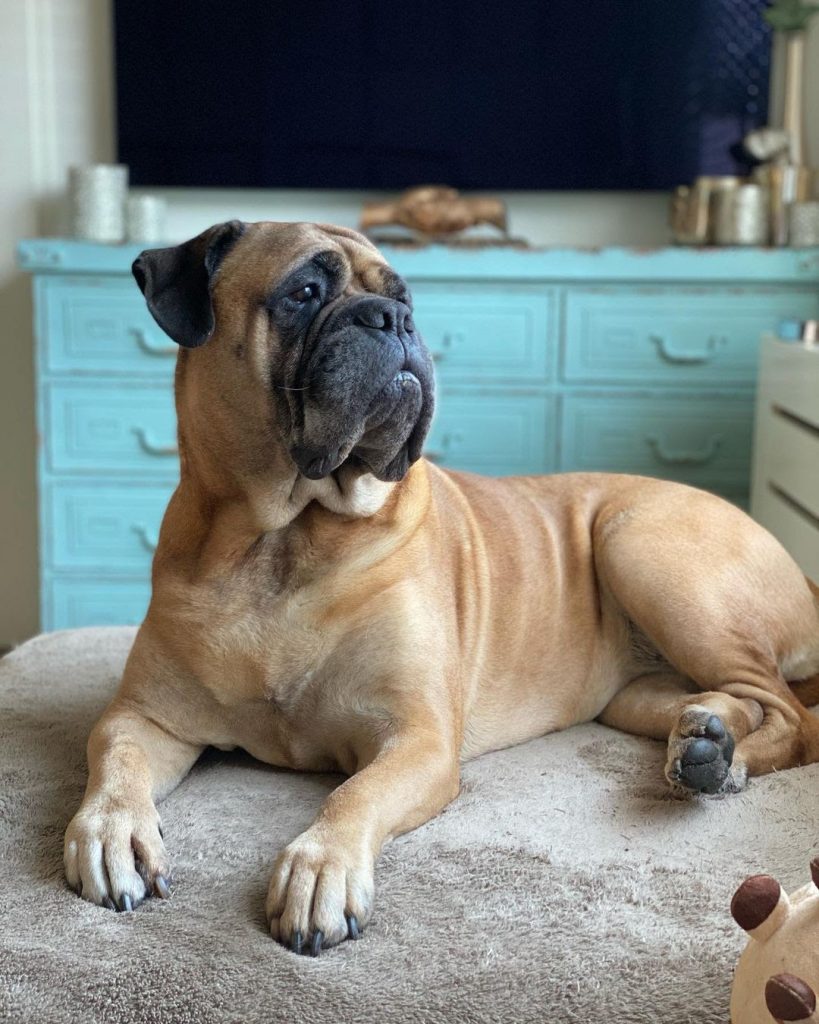

At first glance, you could easily mistake the Bullmastiff for a Bulldog due to his facial structure. But for those who know about his ancestry, they’d see a Mastiff’s body and a face of the Bulldog. Such a combination is interesting and the mixture of heritages produced non-extreme features for this dog.
The Bullmastiff can be described as large, powerful, firm, and athletic. He has a broad muscular chest, a short and black muzzle, dark-shaded ears, and straight forelegs. His hind legs are well-angulated and his tail is medium in length. A few facial wrinkles can be visible and these add up to his menacing image.
His measurements are listed below:
- Male: 25 to 27 inches tall: 110-130 pounds heavy
- Female: 24 to 26 inches tall: 100-120 pounds heavy
When it comes to his coat, there are only three natural colors possible for this breed and they are fawn, brindle, and red.
Temperament
Tibetan Mastiff
This dog breed is not recommended for novice owners due to how difficult it is to manage such an independent dog. He likes to act on his own and would not hesitate to defy his owner’s commands no matter how much he’s bonded with him. However, if the owner is firm, patient, and consistent in training him, a big difference in attitude will show.
Do remember as well about his history as a guardian. He’ll be highly territorial and would easily react if someone trespassed his owner’s home or property. He’s very wary of strangers, so socialize him as a puppy to help him understand that there would be times when his display of aggression is unnecessary.
Bullmastiff
The imposing and serious look of the Bullmastiff should not hinder you from thinking that he’s also capable of showing affection toward his family. He’s much better off with families whose kids are old enough to know how to properly handle a large dog. This is a people-pleasing canine and would love to be by his owner’s side all the time.
When it comes to strangers and other pets, the Bullmastiff isn’t the friendliest on the list. His protective instinct is overpowering at times that he automatically builds up a huge wall between him and the other potential new friend. To help him understand that interactions with others are alright, socialize him as a puppy and keep on training him as he grows.
Exercise Needs
Tibetan Mastiff
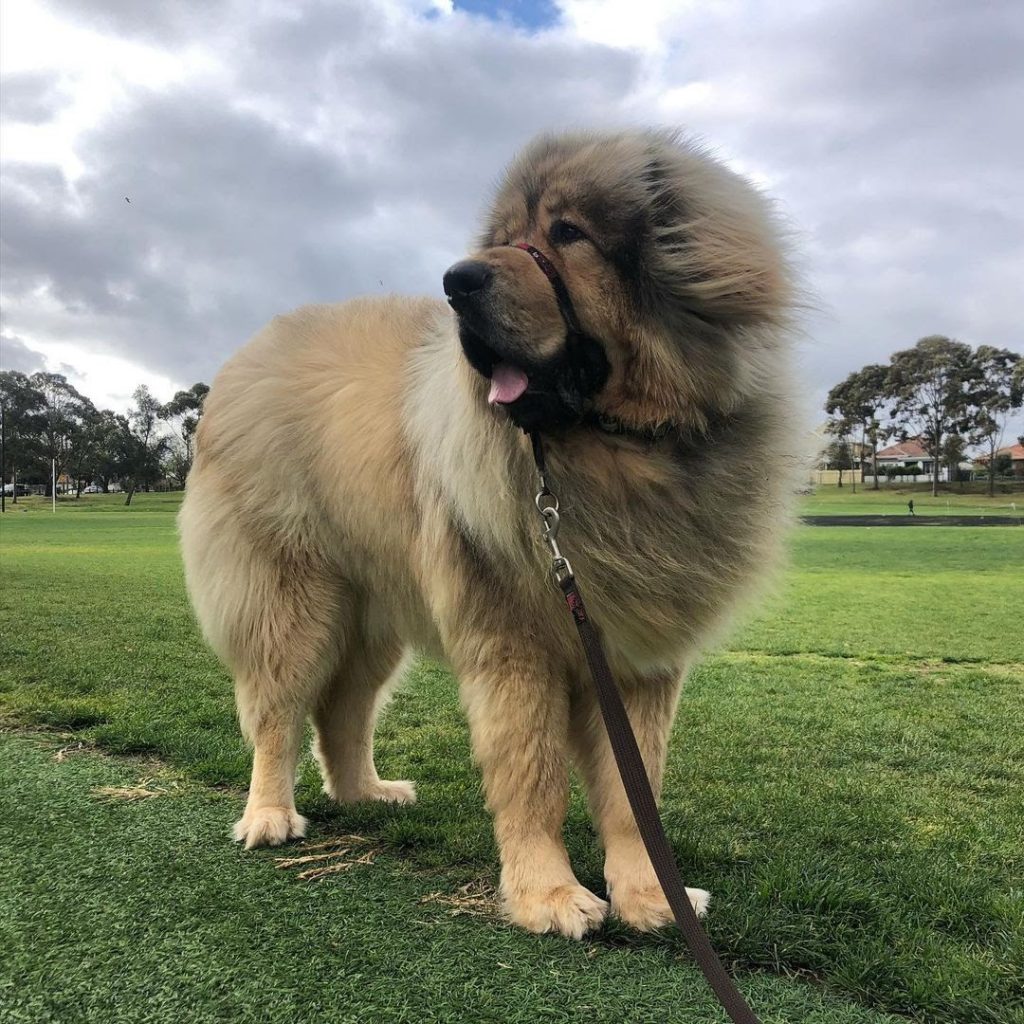

At least an hour of exercise is enough for the Tibetan Mastiff. He has a moderate amount of energy so don’t expect him to be rambunctious all the time unless he’s a puppy. Accompanying him for a walk or being there with him in playing games make the whole thing fun. After all, he loves to be around his owner.
Exercise will keep him fit and away from medical problems related to long-term immobility. This also improves his mental well-being!
Bullmastiff
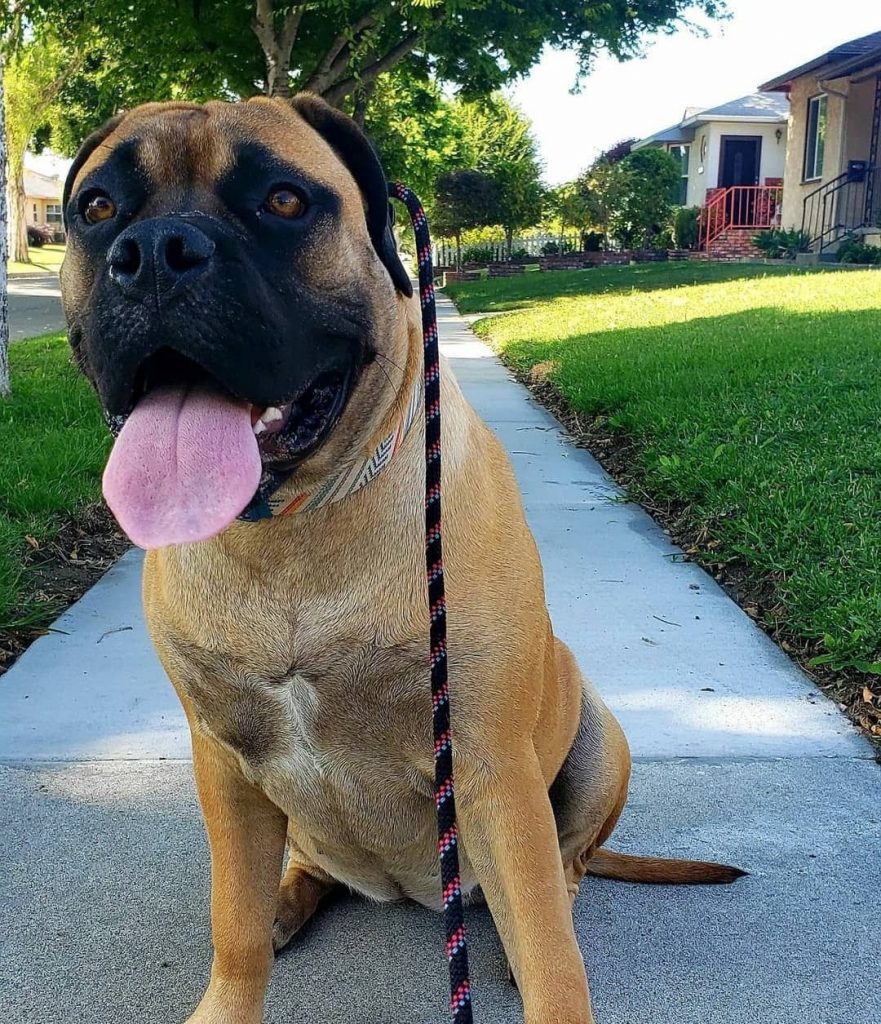

Two hours of exercise each day is ideal for the Bullmastiff breed. He doesn’t have high energy levels making him a suitable dog in an apartment-style living as long as he gets to see and explore the outside environment regularly.
To keep him healthy, let him go out for a walk in the morning or afternoon and give him some time to play off-lead in a fenced yard. Encourage him to be adventurous so he’ll always look forward to sweating off daily.
Grooming Requirements
Tibetan Mastiff
The fluffy coat of the Tibetan Mastiff might make us think he’d be very high-maintenance. But, good news! This large canine rarely sheds and would only blow off his entire coat once a year. During his shedding season, brushing him almost every day in a week and washing him more often will help in speeding up his shedding process.
If the shedding phase is over, your Tibetan Mastiff can get back to a weekly brushing and a 6-8 week frequency in the bath.
Bullmastiff
Brush your Bullmastiff’s coat daily even if it can withstand unpleasant weather. This will remove all loose hairs and prevent them from sticking to your furniture. Baths are only necessary if he appears dirty or if he smells bad. Don’t forget about his routine maintenance on areas like his nails, teeth, and ears to ensure he doesn’t have any infections.
Health Problems
Tibetan Mastiff
We know how much you care about your Tibetan Mastiff dog. That’s why it is worth discussing what his common health conditions are. Commonly, the following are some of the major concerns you’d need to know about:
- Cataracts
- Infections
- Bone & joint problems
- Epilepsy
Bullmastiff
Unfortunately, the Bullmastiff breed is one among several dogs who suffer from genetic conditions. These can be treated however if they are diagnosed early and are given medication to keep them from getting worse. Some of his health problems include:
- Gastric torsion
- Subaortic stenosis
- Hypothyroidism
- Heart disease
Breed Popularity
The American Kennel Club’s breed popularity ranking puts the following dog breeds in their respective orders out of 200 dog breeds:
Tibetan Mastiff: 131st
Bullmastiff: 51st
Who’s the Better Dog?
There’s no such thing as a better dog breed since all of them are unique and incomparable. However, considering that either the Tibetan Mastiff and the Bullmastiff are not for anyone or everyone, you have to determine which one your lifestyle can accommodate. Know as well your preference in looks and if you can keep up with the demands of a certain dog breed of your choosing!
